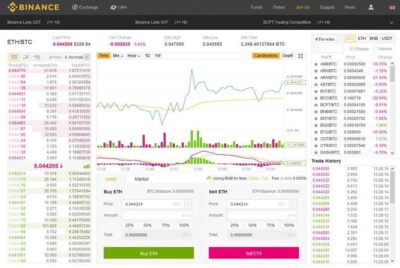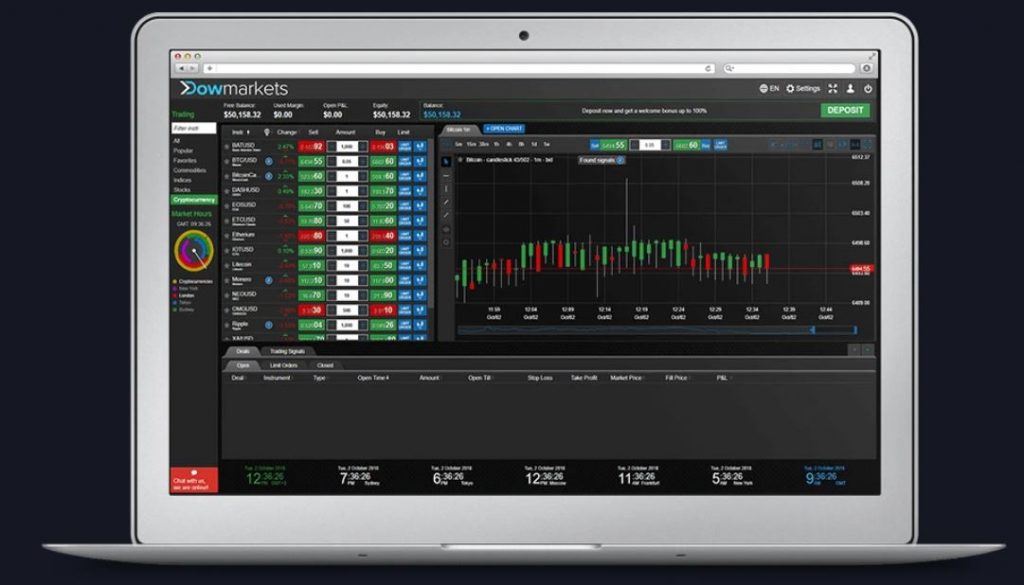Contents
He has been published on well-known personal finance sites like Bankrate, Credit Karma, MoneyCrashers, DollarSprout, and more. TJ has a bachelor’s in business administration from Northeastern University. Trailing buy-stops specify a stop price that follows, or “trails,” the lowest price of a stock by a percentage or dollar amount that you set. If the stock rises above its lowest price by the trail or more, it triggers a buy market order.
If you had bought GME at $54, expecting it to drop back down to its previous low of $2.57 , you would have been forced to buy back shares at $483 and lost $42,900 instead of gaining it. Jade LizardA jade lizard is a slightly bullish strategy that combines a short put and a short call spread. There also are many commercial websites and some newspapers that offer this information. If you enter the words “short interest” into most Internet search engines, you’ll quickly find websites that can provide this information. Slippage occurs when an order is filled at a price that is different from the requested price. The difference between the expected fill price and the actual fill price is the “slippage”.
- “Naked” short selling, however, can have negative effects on the market.
- The Charles Schwab Corporation provides a full range of brokerage, banking and financial advisory services through its operating subsidiaries.
- However, the reality is that short selling provides liquidity, meaning enough sellers and buyers, to markets and can help prevent bad stocks from rising on hype and over-optimism.
- By February, you buy back the stock at around $54 per share and return the shares back to your broker.
That means an investor needs to be really sure about the demise of an asset in order to short it. However, as we saw in the case of GameStop, with a stock that was considered to be well on its way out, things can turn around and there is always a risk. In that case, it was a group of retail traders that got together on a forum to talk up the stock and increase its demand and therefore its price by buying it as a group. This meant that the Wall Street investors, such as the Hedge Funds, who had shorted this stock, were suddenly left with an inflated stock price, bringing them massive losses when they had to buy the stock back to fulfil the contract. Selling stock short and failing to deliver shares at the time of settlement.
How to Short a Stock
The trader can hedge this risk by selling government bonds short against his long positions in corporate bonds. In this way, the risk that remains is credit risk of the corporate bonds. One may also take a short position in a currency using futures or options; the preceding method is used to bet on the spot price, which is more directly analogous to selling a stock short. Transactions in financial derivatives such as options and futures have the same name but have different overlaps, one notable overlap is having an equal “negative” amount in the position.
The opposite of the short squeeze is the less common long squeeze, which will lead to further decline in a security’s price. In addition to margin interest, difficult-to-borrow stocks also carry a ‘difficult-to-borrow’ fee. Similar to depositing a margin while initiating a long position, the short position also would require a margin deposit. The margins are similar for both the long and short positions and they do not really change.

In addition to the usual trading commissions, an investor going short is responsible for paying margin interest to a broker for the right to borrow a security. U.S. investors considering entering into a “short against the box” transaction should be aware of the tax consequences of this transaction. Unless certain conditions are met, the IRS deems a “short against the box” position to be a “constructive sale” of the long position, which is a taxable event. The term short was in use from at least the mid-nineteenth century.
Understanding Short Selling
An alternative is to try trading Mini-SPX Index options, which go by the ticker XSP℠. They also track the S&P 500®and they have the same notional size as SPY options. But Mini-SPX options are European style, which means they can only be exercised/assigned at expiration. European style options eliminate the uncertainty of early exercise, which many traders prefer. Mini Russell 2000 Index Options, trade under the ticker MRUT and are very similar, read more about them here. Arbitrage is one alternative investment strategy that can prove exceptionally profitable when leveraged by a sophisticated investor.
You can gain access to our platform and practise short-term trading with virtual funds before committing to a real live trade. Depending on your strategy, this can vary as to when the market is most liquid or oversees the most price action. You can adjust your chart timeframe settings to reflect the previous second, minute, hour, day, week and so on. Our short-term trading app has won awards for Best Mobile/Tablet App and is suitable for both iOS and Android devices.

Position trading is another option if you want to use a long-term trading strategy using derivative products. Short-term trading is a strategy that aims to open and close positions within a short timeframe, usually days or weeks, although it can be even shorter. This type of trading strategy is particularly popular with retail and institutional traders that hope to profit from small price movements and short-term trends. In the UK, the Financial Services Authority had a moratorium on short selling of 29 leading financial stocks, effective from 2300 GMT on 19 September 2008 until 16 January 2009. After the ban was lifted, John McFall, chairman of the Treasury Select Committee, House of Commons, made clear in public statements and a letter to the FSA that he believed it ought to be extended.
Best Online Brokers for Stock Trading
Swing trading is a short to medium-term strategy, where traders hold open positions for a number of days or weeks. As implied by its name, traders may examine the swing highs and swing lows of an asset’s price in order to assess whether it has upcoming potential for profit. Day trading creates a balance between an extreme short-term strategy, like scalping, and a longer-term strategy such as swing trading. These types of traders could use hourly charts to analyse price data and spot recent emerging or declining trends in order to decide whether to buy or sell a financial instrument. Once they see that their chosen market is moving in an unfavourable direction, they can exit the position quickly to avoid losses. A short squeeze is a phenomenon when investors trigger a rise in price on a heavily shorted stock.

But it can be a smart alternative to the unlimited loss exposure that comes with shorting a stock. Sometimes, you’ll find an investment that you’re convinced will drop in the short term. In those cases, short-selling can be a way to profit from the misfortunes that a company is experiencing. The short-seller hopes that the price will fall over time, providing an opportunity to buy back the stock at a lower price than the original sale price. Any money left over after buying back the stock is profit to the short-seller.
Looking to the Futures: Big Moves in Energy Markets
Besides the previously-mentioned risk of losing money on a trade from a stock’s price rising, short selling has additional risks that investors should consider. In a traditional stock purchase, the most you can lose is the amount you paid for the shares, but the upside potential is theoretically limitless. When you short a stock, it’s the opposite — gains are maxed out at the total value of the shorted stock if the stock price falls to $0, but your losses are theoretically limitless, because the stock price can rise indefinitely. This just means buying back the same number of shares you borrowed after the price decreases. Once you buy them, the broker will immediately take the shares and any fees. Consolidation is not right for everyone, so you should carefully consider your options.
2 – Shorting stocks in the spot market
Therefore, the investor borrows 100 shares from a broker while short selling those shares to the market. So now the investor “shorts” 100 shares of Stock A which he did not own with hopes that the share price will decline. Short sellers make money by betting that a stock’s price would go down. If you borrow a share and sell it for $50, then buy it back for $40 and return it to your lender, you get to keep the $10 difference as profit. However, since the price of a stock can keep increasing theoretically, short sellers face unlimited risk.
Dear sir u are doing great job.pls explain me how Arbl shareholders equity is 1059 cr for 2013 instead of cr.pls reply sir. Get stock recommendations, portfolio guidance, and more from The Motley Fool’s premium services. System response and access times may vary due to market conditions, system performance, and other factors.
The purpose of this technique is to lock in paper profits on the long position without having to sell that position . Once the short position has been entered, it serves to balance the long position taken earlier. Thus, from that point in time, the profit is locked in , regardless of further fluctuations in the underlying share price. For example, one can ensure a profit in this way, while delaying sale until the subsequent tax year.
When you sell a security, you must deliver your securities, in certificated or electronic form, to your brokerage firm no later than two business days after the sale. “Naked” short selling, however, can have negative effects on the market. Fraudsters may use “naked” short selling as a tool to manipulate the market. The SEC has toughened its rules including through the adoption of Rule 10b-21 in 2008, referred to as the “naked” short selling antifraud rule, and is vigilant about taking actions against alleged wrongdoers. In a “naked” short sale, the seller does not borrow or arrange to borrow the securities in time to make delivery to the buyer within the standard settlement period.
However, the practice of a short position in derivatives is completely different. Each trade results in a “long” (buyer’s position) and a “short” (seller’s position). Most brokers allow retail customers to borrow shares to short a stock only if one of their own customers has purchased the stock on margin. Brokers go through the “locate” process outside their usgfx broker own firm to obtain borrowed shares from other brokers only for their large institutional customers. To sell stocks short in the U.S., the seller must arrange for a broker-dealer to confirm that it can deliver the shorted securities. Brokers have a variety of means to borrow stocks to facilitate locates and make good on delivery of the shorted security.
Short selling occurs when an investor borrows a security, sells it on the open market, and expects to buy it back later for less money. The term sell is the process of liquidating an asset in exchange for cash. It generally refers to the act of exiting a long position in an asset or security. Meme stocks describe the shares of companies that have gained a cult-like bdswiss trading following on social media, which can influence share prices. James Chen, CMT is an expert trader, investment adviser, and global market strategist. He has authored books on technical analysis and foreign exchange trading published by John Wiley and Sons and served as a guest expert on CNBC, BloombergTV, Forbes, and Reuters among other financial media.
The risk of loss on a short sale is theoretically unlimited since the price of any asset can climb to infinity. When traders believe that a security’s price is likely to decline in the near term, they may enter justforex review and comments a short position by selling the security first with the intention of buying it later at a lower price. To set up a short position, traders generally borrow shares of the security from their brokerage.
In 2011, the eruption of the massive China stock frauds on North American equity markets brought a related risk to light for the short seller. The efforts of research-oriented short sellers to expose these frauds eventually prompted NASDAQ, NYSE and other exchanges to impose sudden, lengthy trading halts that froze the values of shorted stocks at artificially high values. Reportedly in some instances, brokers charged short sellers excessively large amounts of interest based on these high values as the shorts were forced to continue their borrowings at least until the halts were lifted. In particular, it is ‘naked’ short selling that has been cited as a major accelerator of market downturns. While typical short selling involves selling borrowed stocks; naked short selling entails shorting a stock you do not own, have not borrowed nor have positively determined that they exist. This could mean that a seller may fail to deliver the shares to a future buyer and this can lead to market distortion.
In a short position, an investor borrows a security in the expectation that it will decrease in value. Shorting a stock in the futures segment has no restrictions like shorting the stock in the spot market. In fact this is one of the main reasons why trading in futures is so popular.
